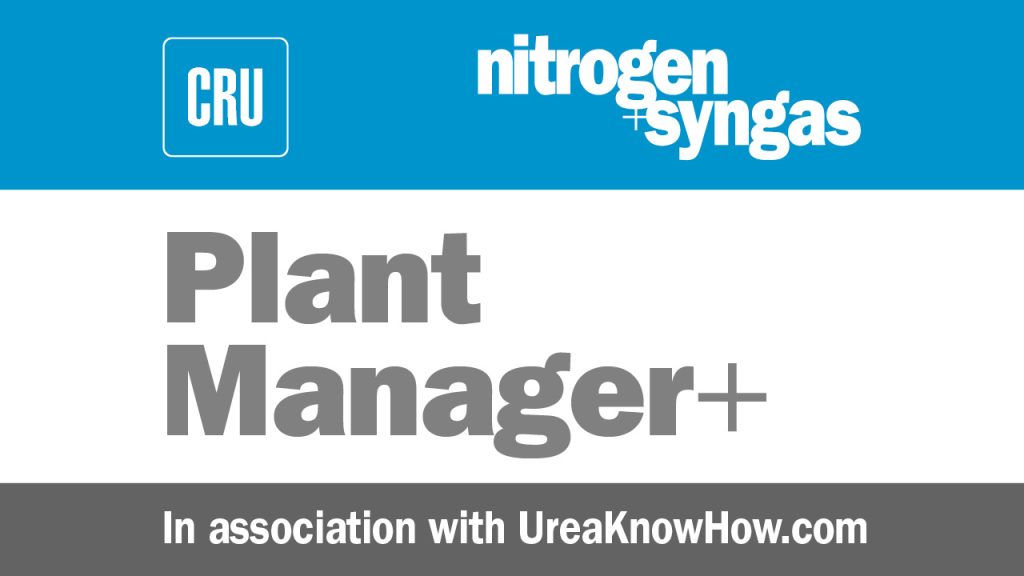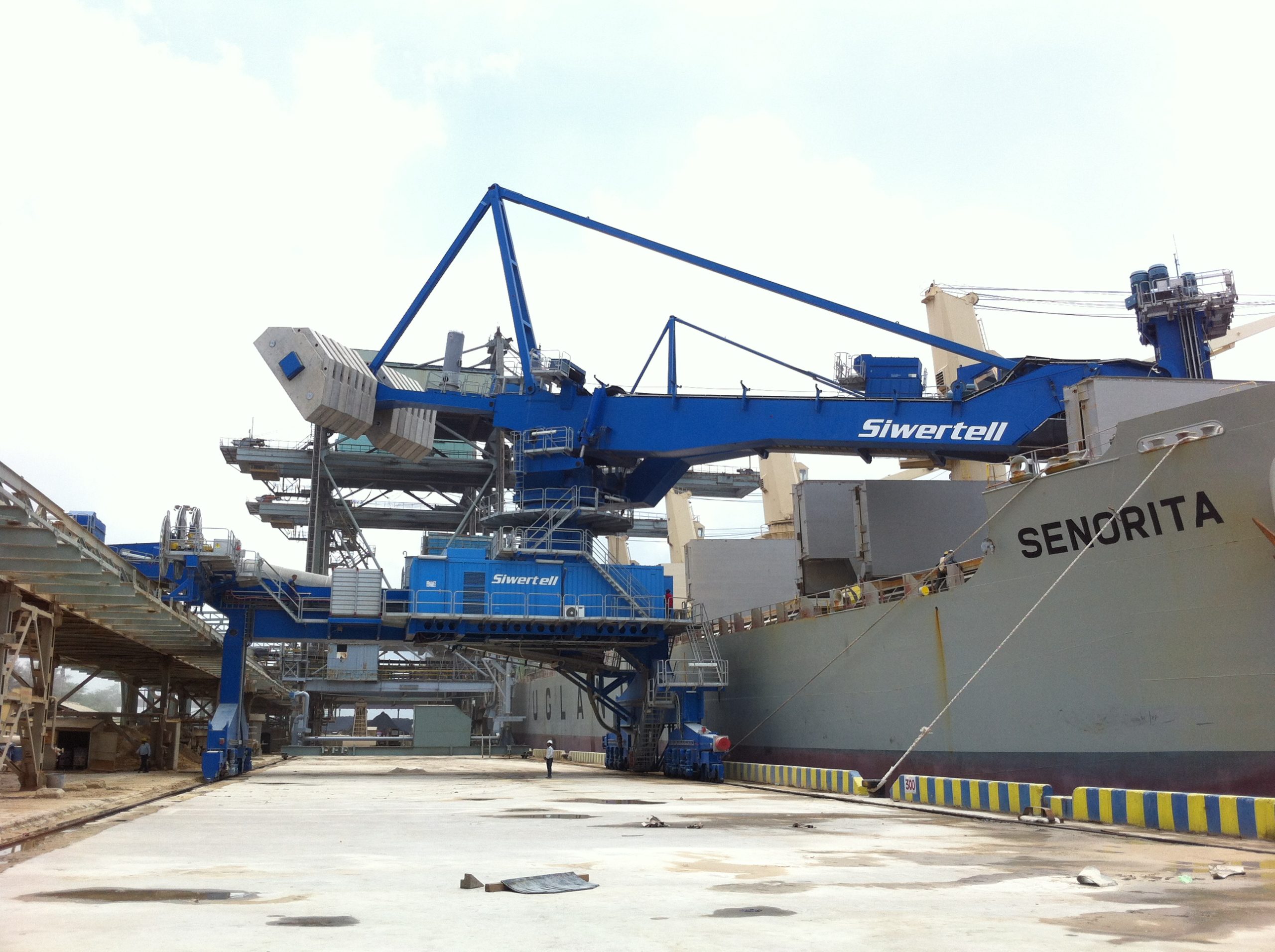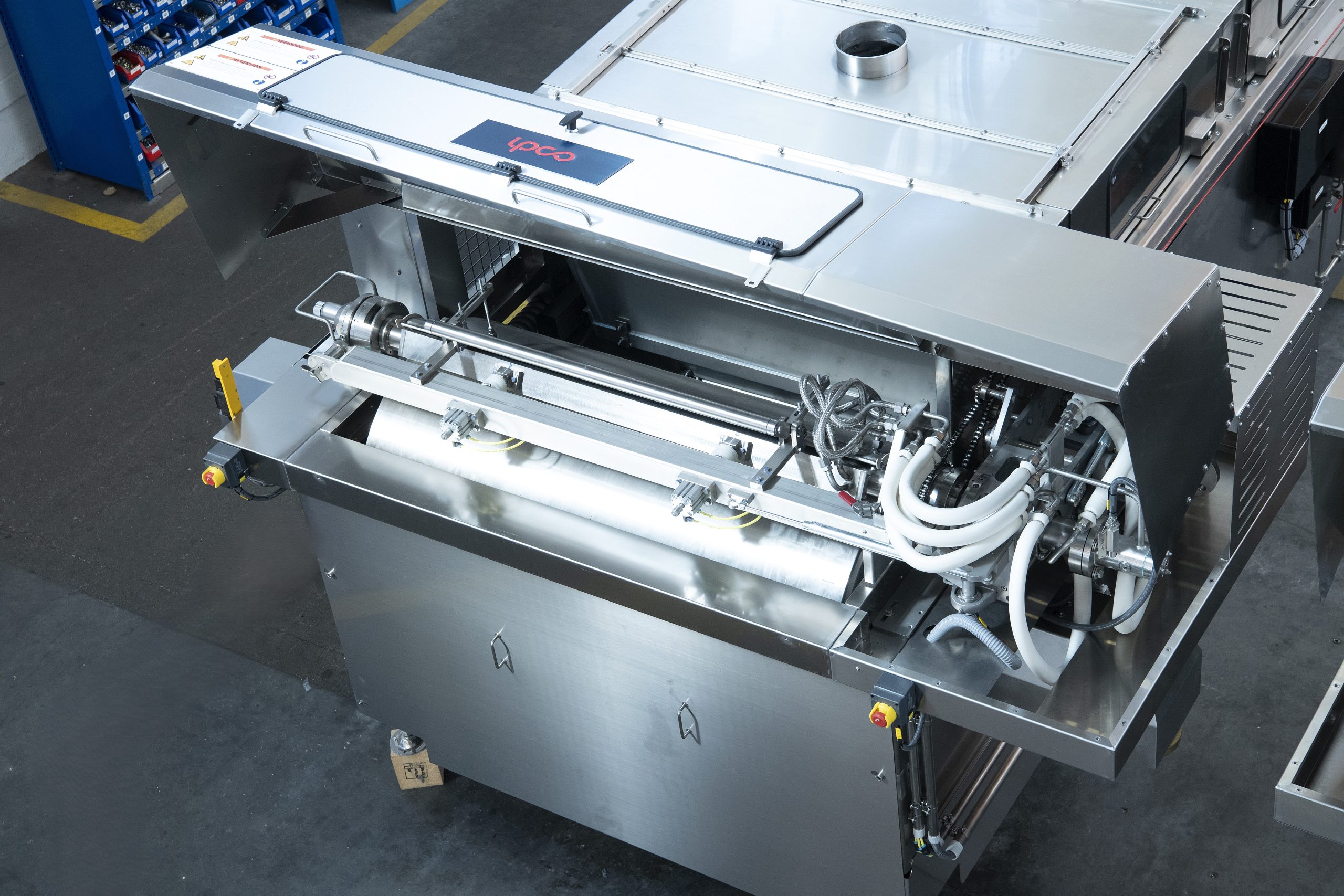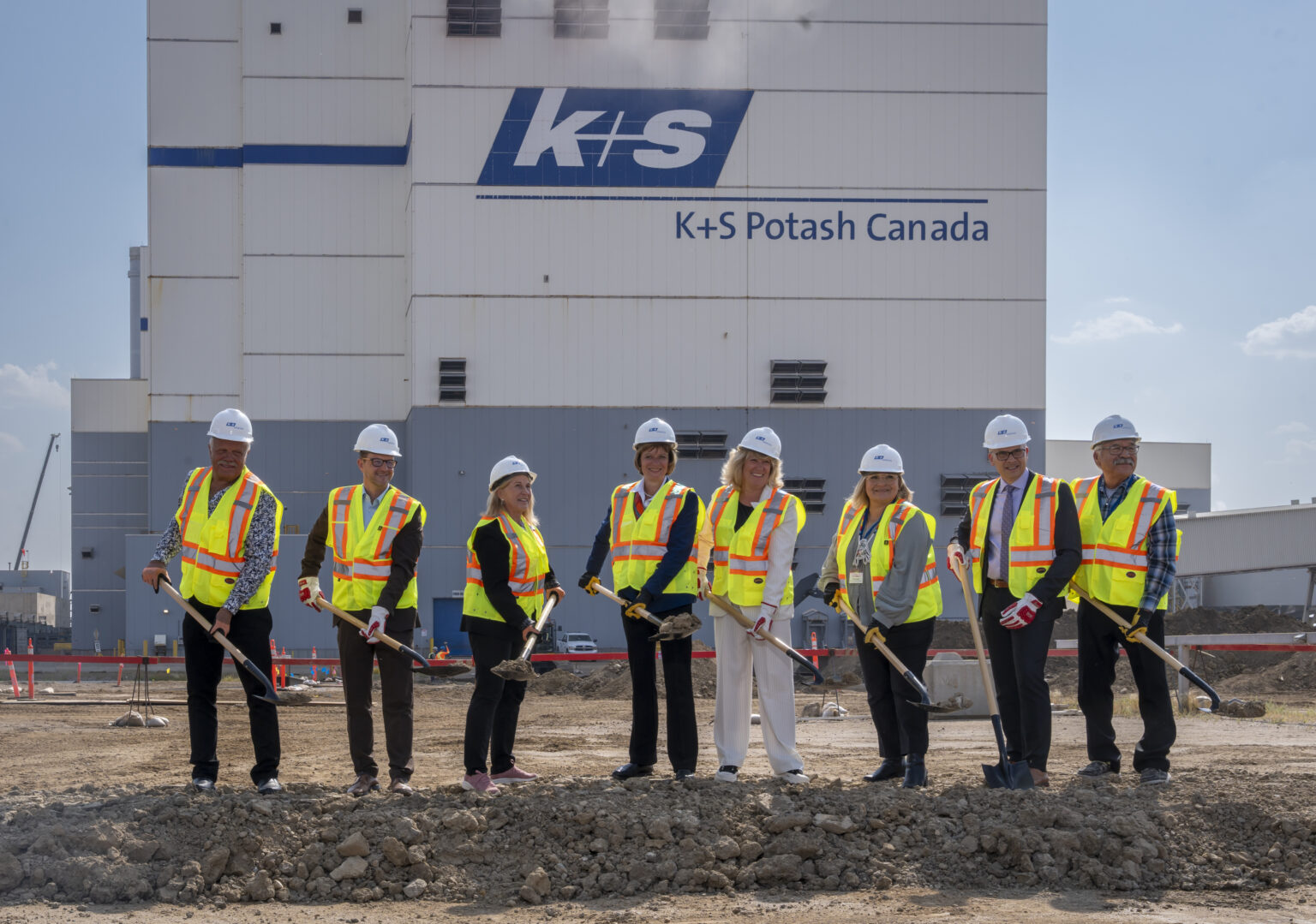Nitrogen+Syngas 321 Jan-Feb 2013

28 February 2013
Problem No. 16: High pressure scrubber problem
Sometimes a serious problem occurs in a urea plant, which forces the plant to reduce capacity or even forces a shutdown. It is then vital to find the root cause of the problem as soon as possible, especially if the problem repeats. Such a situation happened at Khorasan Petrochemical Company in Iran. Mr Eisa Norozi started a discussion in the UreaKnowHow.com Round Tables to provide support for his troubleshooting. The following discussion helped Eisa to find the root cause of the problem much more quickly, which clearly proves the added value of modern communication tools like the internet.

Mr Eisa Norozi of Khorasan Petrochemical Company in Iran: We have a Stamicarbon CO2 stripping urea plant with a capacity of 1,700 t/d which is integrated with a melamine plant. We have been faced with a new problem as described below.
During normal operation, for about 20 minutes, the gas outlet temperature of the HP scrubber decreased from 145°C to 107°C and the pressure in the synthesis section increased to 152 bar (normally it is 145 bar). We immediately decreased the plant capacity and washed the scrubber with the HP steam condensate pump. The situation of the plant went back to normal, but two days after changing the HP carbamate pump the problem was repeated. We couldn’t increase the load of the HP carbamate pump because the outlet temperature of the HP scrubber gas line had decreased and the pressure of the synthesis had gone up which meant we were unable to control the plant anymore.
It should be noted that the DT in the tempered cooling water loop did not change, water circulation in the loop was normal and immediately after washing the packed bed with the HP steam condensate pump injected at the discharge side of the HP carbamate pump the problem was solved but during any change around of the HP carbamate pump the problem is repeated.
We would like to ask the following questions:
- Do you have any experience with melamine carry over to carbamate (making a polymer on the packed bed in the HP scrubber) causing chocking of HP scrubber bed in the urea plant. If yes what is the procedure to solve it?
- Do you have any experience with a partial rupture in the rupture disk in the HP scrubber: What happens when there is a partial rupture?
- Do you have any experience with blockage in the liquid distributor in the HP scrubber with PTFE or other material?
Mr Mark Brouwer of UreaKnowHow.com in the Netherlands replies with some questions:
Could you have a problem with clogging of the HP inert valve at the outlet of the HP scrubber? What is the carbamate flow and its composition compared to the design values? Could you have a flooding problem?
Eisa provides some more information: This is the first case in our plant of a problem where the cause is unknown. As previously described, when steam condensate is injected in the outlet pipe of the HP carbamate pump for approximately 20 minutes, the problem is solved but after some days especially during any change in the HP carbamate pump situation (for example fluctuation in flow or during change of the pumps) the problem reoccurs. The plant capacity (carbamate flow) does not change but during that time we cannot increase the flow of carbamate because the carryover of carbamate to the LP absorber increases the temperature of the outlet line of the HP scrubber decreases and the pressure of the synthesis increases gradually up to a high condition.
The causes could be the following although we cannot find any clear reasons for these causes:
- Partial opening in the rupture disc because in every overhaul we experienced this and it was repaired by welding.
- Clogging in packed bed with carbamate.
- Melamine carry-over in the off gas from the melamine plant, which makes a polymer in the packed bed.
- Clogging in holes of the carbamate liquid distributor in HP scrubber with PTFE or other material as our HP carbamate pump is reciprocating type.
- Flooding in the HP scrubber, but the cause is not clear.
Currently we cannot increase the carbamate flow, the capacity is decreased and we must drain the carbamate to the ammonia water tank.
Mark asks further:
- I assume carbamate flow has increased after melamine integration… by how much %?
- Has the carbamate liquid divider been adapted for the new flow?
- When did this problem first occur? Since a turnaround?
- Please confirm you have a water/steam flush on the stream close to the high pressure inert valve and, if possible, provide a printout of the DCS screen on the HP scrubber.
Eisa provides more information:
The melamine plant was integrated 8 years ago. Before the problem occurs the rpm of the HP carbamate pump is 145 but afterwards it is about 130 rpm. In this condition we must drain the carbamate. Our procedure is to wash the scrubber bed with HP steam condensate pump while the HP carbamate pump is out of service for 20 minutes which solves the problem and production returns to normal. But as mentioned before after some days with a small fluctuation in the carbamate flow the problem recurs.
Mr Muhammad Kashif Naseem of SABIC in Saudi Arabia contributes to the discussion:
I agree with Mark. I suggest the following actions: flush the vent line at the outlet of the HP scrubber, increase the cooling water temperature across the HP scrubber and analyse the composition of carbamate solution to HP scrubber.
I think this problem has two causes: the scrubber bed is choked or collapsed and the partial condensation is taking place at the bottom part of HP scrubber heat exchanger.
Eisa replies:
Thanks for your advice.
- The outlet line and packing bed are washed with HP steam condensate.
- The composition of the carbamate does not change and it is the same as before.
- The delta temperature in the tempered cooling water loop is normal.
- Please explain more about the effect of condensation in the bottom part of the heat exchanger.
Do you have any experience of melamine carryover to carbamate, resulting in a polymer in the packed bed?
Have you experienced that partial collapse in the rupture disc creates this problem?
We cannot increase the carbamate flow because the temperature of the HP scrubber outlet pipe to the LP absorber would decrease and the synthesis pressure would increase.
Mr Hasan Kashany of KPIC in Iran asks for further clarification: How much is the LP absorber pressure and HP scrubber level at that time? Are these items constant or decreasing?
Eisa replies:
The LP absorber pressure is constant but when the temperature in the outlet line of the HP scrubber decreases, the pressure of the LP absorber decreases too, because less gas is coming from the HP scrubber and in that time we cannot increase the carbamate flow. The HP scrubber level also decreases.
Mark comes back:
I still feel there might be a problem with fouling/clogging of the high pressure inert valve.
- Do you have a continuous water flush upstream of this valve?
- Are you sure this is not the cause? If yes, why?
For me, it is difficult to imagine the packed bed can be fouled in such a way that it can have these consequences. And if melamine related “polymers” are causing fouling, can they be dissolved so easily with water? Mr Majid Mohammadian of OCI Nitrogen in the Netherlands: As I remember, in the top of the HP scrubber there is a block valve then the steam condensate connection that is not continuous and then the HP inert valve and downstream of this valve there is a steam jacket to LP absorber. The main reason for carbamate crystallisation in gas phases is low N/C ratio, so first of all increase the N/C ratio in the synthesis so that you also have a higher N/C ration in the gas phase.
I believe that you are experiencing crystallisation/choking due to low N/C ratio in the synthesis. Make sure that the HP ejector performance is good and there is no problem with the level in the scrubber, especially when changing the carbamate pump or during fluctuation.
Mr Channing Spears of PCS in the USA provides some valuable suggestions:
How often is the HP inert valve flushed and what percentage is it open? What is happening to the rest of your synthesis section? What is your N/C ratio? Are any other temperatures dropping besides that of the HP scrubber outlet? When I read decreasing temperatures and increased synthesis pressure, my first thought was that you were too high on the NH3 side.
Eisa replies:
Water flushing of the gas line to the LP absorber and packed bed is done only when there is a problem and in normal condition it is not in use.
I agree with Mark about melamine polymer because it cannot be easily removed with water flushing.
The gas line and HP inert valve are open because during the problem there is carryover of carbamate to the LP absorber and the opening of the gas outlet control valve of the LP absorber does not change.
During water flushing the inert valve was fully open and in normal position it is open more than 80%.
The N/C ratio is about 3.2 according to N/C meter and laboratory analysis and the other temperatures are normal (for example the temperature of the reactor gas line to the HP scrubber is 184°C).
Two questions remain:
- What, if any, is the effect of partial opening in the internal rupture disk in the HP scrubber?
- With temperatures of about 102°C in and 11°C out of the tempered cooling water loop how can we have partial clogging in the packed bed?
Mark replies:
When you have a damaged cylinder (rupture groove part) in the HP scrubber, carbamate gas from the reactor will bypass the heat exchanger part of the HP scrubber and will go directly to the absorber part or gas outlet of the HP scrubber. Your load on the LP absorber will increase. Pure carbamate (i.e. no water) crystallises at 153°C.
- What is the N/C of the recycled carbamate and what is its water content?
- When you see carbamate carryover to the LP absorber during the problem, it makes me think of flooding.
- Is the carbamate flow much larger than design?
- If yes, have the HP scrubber internals been adapted for the larger flow?
With the above suggestions and information Eisa received support to identify out the most likely causes of the problem and has been able to solve it more quickly.
| This series of discussions is compiled from a selection of round table topics discussed on the UreaKnowHow.com website. UreaKnowHow.com promotes the exchange of technical information to improve the performance and safety of urea plants. A wide range of round table discussions take place in the field of process design, operations, mechanical issues, maintenance, inspection, safety, environmental concerns, and product quality for urea, ammonia, nitric acid and other fertilizers. |






